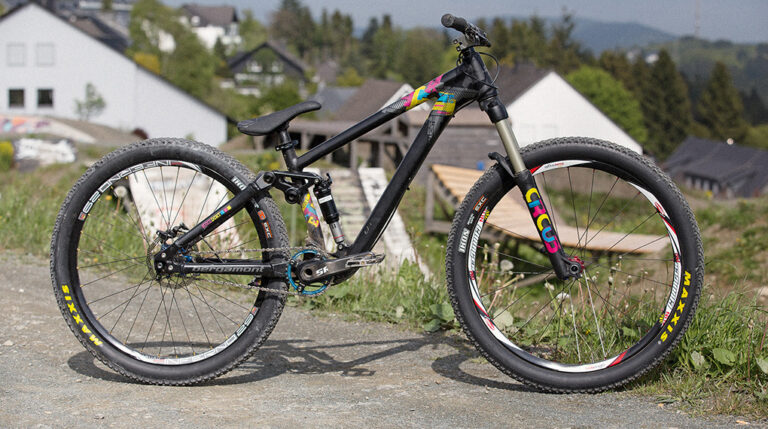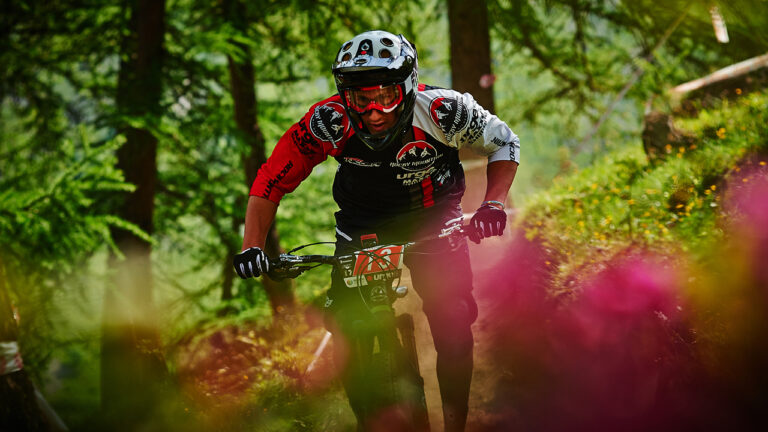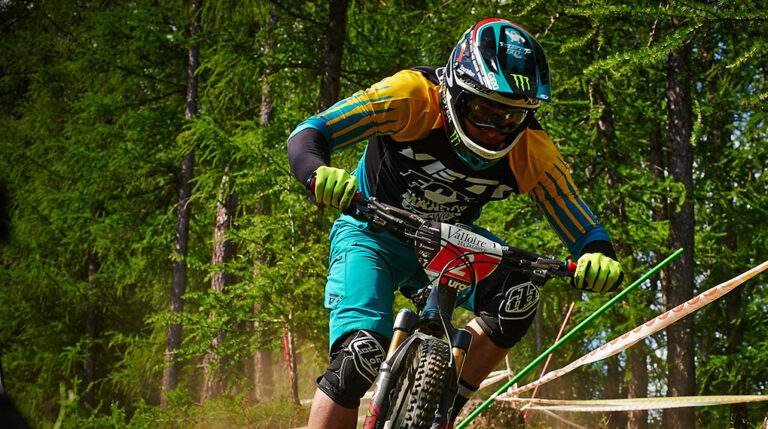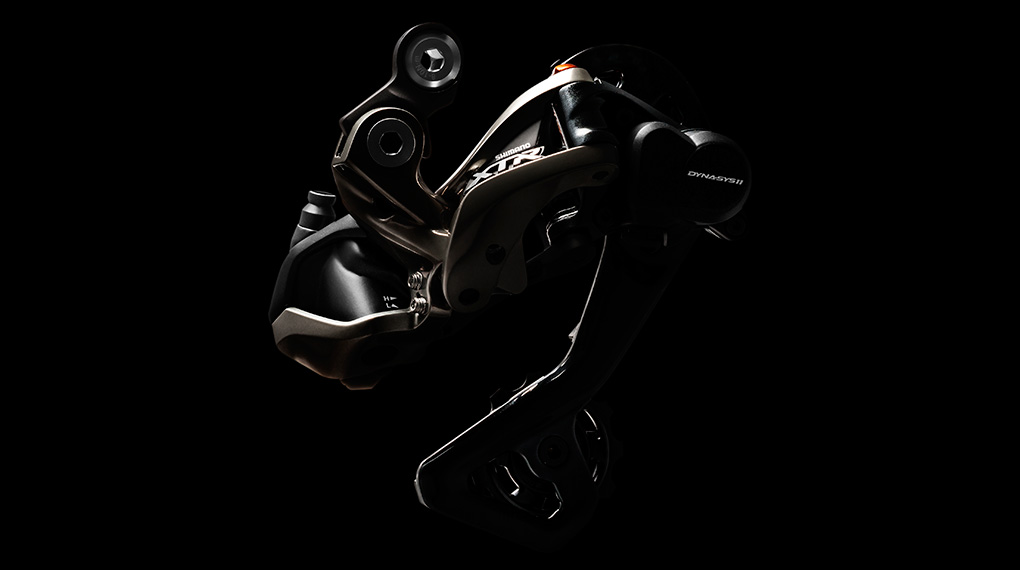
Ever since Shimano first launched its Dura Ace Di2 electronic groupset several years ago we’ve been wondering when they would bring the technology over to mountain biking. As the years have gone by we even started to wonder if they ever would. Would the market accept it? Then we saw the introduction of electronic suspension, something that neatly opened the door of acceptance for Shimano. I say opened it, but maybe nudged it ajar is more the case.
Anyway, whatever your thoughts are on electronic gears in mountain biking, the fact is they are now here. Obviously only time is going to prove whether or not this is a route worth going down, but it has to be said that the system has been well proved in the road and cyclocross world, and it works an absolute treat. Some people have even cobbled together systems that can be used on a mountain bike, and even though they’re not designed for the job they again work brilliantly. Now though there’s no need for that as XTR has its very own electronic Di2 version in the shape of the M9050 groupset, and it has been very much designed for the job in hand.
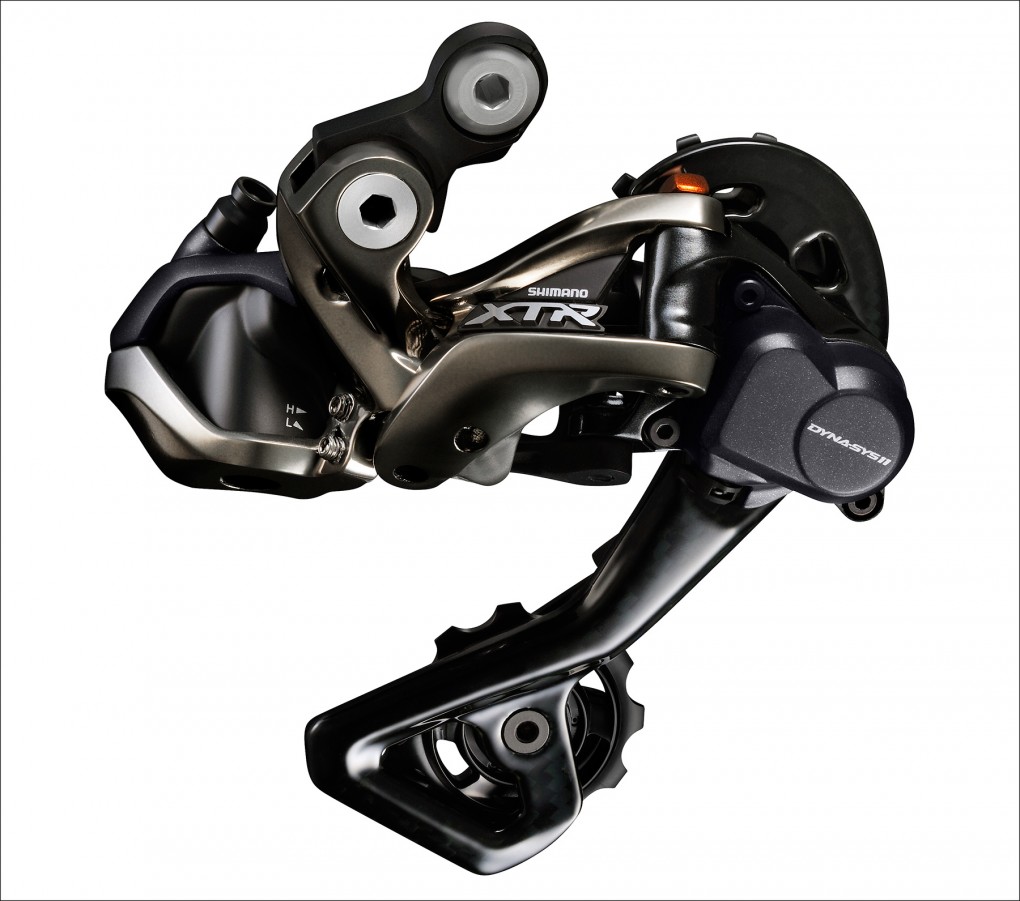
The new rear mech is surprisingly similar in appearance to the mechanical version, but this time it’s connected to the shifter via an electronic wire rather than a traditional mechanical cable. This I suppose is where the main benefit really lies because from my experience the cast majority of gear shifting troubles can be attributed to poor adjustment or condition of a gear cable. This system is a doddle to set up, and once done it should continue shifting perfectly forever (well until the battery runs out at least). Another, and easy to overlook advantage of this motorised system is that you can run the Shadow+ chain stabiliser on full friction for maximum effect without any change in the feel of shifting. If you try to do this with a conventional cable system you’ll find the effort needed to shift gets considerably more.
Of course skinny electrical cables do give slight cause for concern on a mountain bike, but eventually we may see these being routed internally and out of harms way. If something does go wrong the rear mech can be placed in any gear by hand, and so in that respect it’s better than a mechanical one. Should something impact the rear mech in a way that could potentially damage the motor, there is actually a break-away system in place to protect the motor. Still, if you do manage to break the mech you may well be sobbing for some time cos £430 is A LOT of money to be having to shell out for another one.
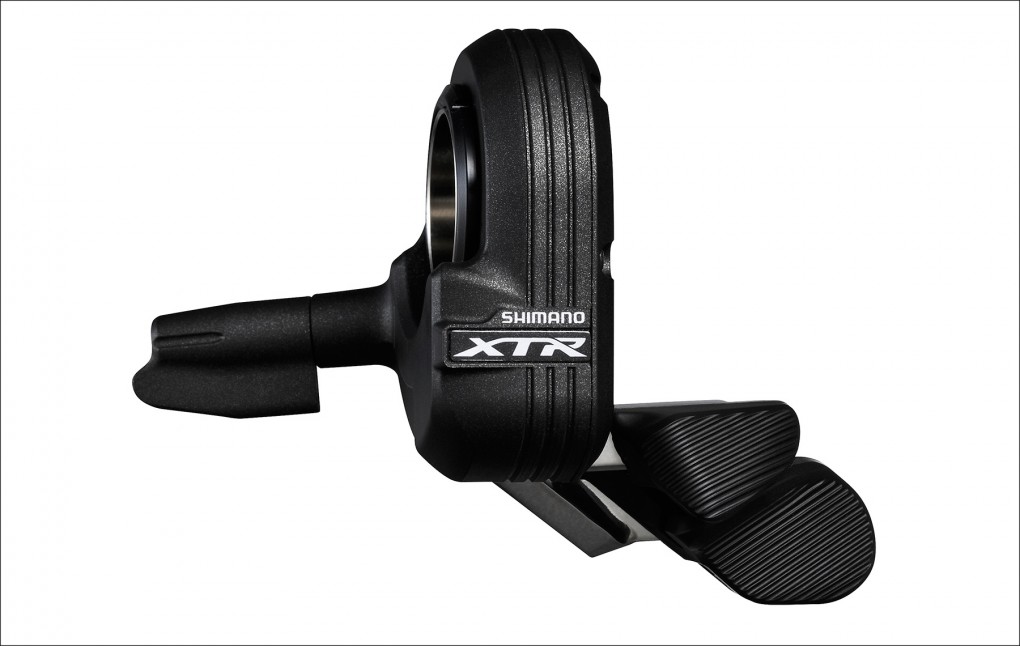
At the other end of the system is arguably the most interesting part of the new system, the shifter. Shimano have made a conscious decision to not make it too dissimilar to their mechanical shifters, but the levers do have a noticeably shorter throw, and of course an incredibly light action. Personally I think I’d actually like to see something radically different that takes full advantage of the electronic nature, but maybe that’s a step too far right now?
Anyway, the shifters get really interesting when you start to look at how they can be programmed. You can pretty much do anything. You can run the up and down shifts on either lever, you can run either mech on either shifter, or you could even run up shifts on one side and down shifts on the other, regardless of whether or not you’re using a front mech. That’s just the start of it though because if you’re not runnign just a single ring up front you also have the option of using the ‘sync’ mode, and that’s nothing short of crazy. Basically you just use one shifter to shift up and down the gears and the internal brains then work out if just the rear needs shifting, or both at the same time. As we all know with a triple, or even a double setup there’s always some crossover/duplication of gears. For example if you are in the middle ring and biggest sprocket climbing, but want an easier gear, you don’t just shift into the granny ring, you also drop down a few at the rear, otherwise the jump in gearing is too big. This new system though does all that for you, seamlessly. There are no jumps in gears, and Shimano have spent a lot of time studying which of the duplicate gears are the most efficient, and those are the ones that are used. You may think all gears are alike, but thanks to things like chainline and chain wrap, there can actually be a significant difference in efficiency. It is genuinely very clever.
On top of all this customisation you can delve even deeper and start changing things like the speed of shifting. Believe it or not Shimano have actually set this far slower than it could be because they found that after years of using relatively slow cable systems riders subconsciously shift slightly earlier than they actually need to. We are talking fractions of a second here, but apparently if this electronic stuff is set at full tilt you’ll find it very strange indeed. Each shift lever has two ‘clicks’ as standard, but you can set this to just be a single shift if you like, and there’s the press and hold mode which can be turned on or off too…and the speed of those multiple shifts can be set too. Pretty crazy hey!
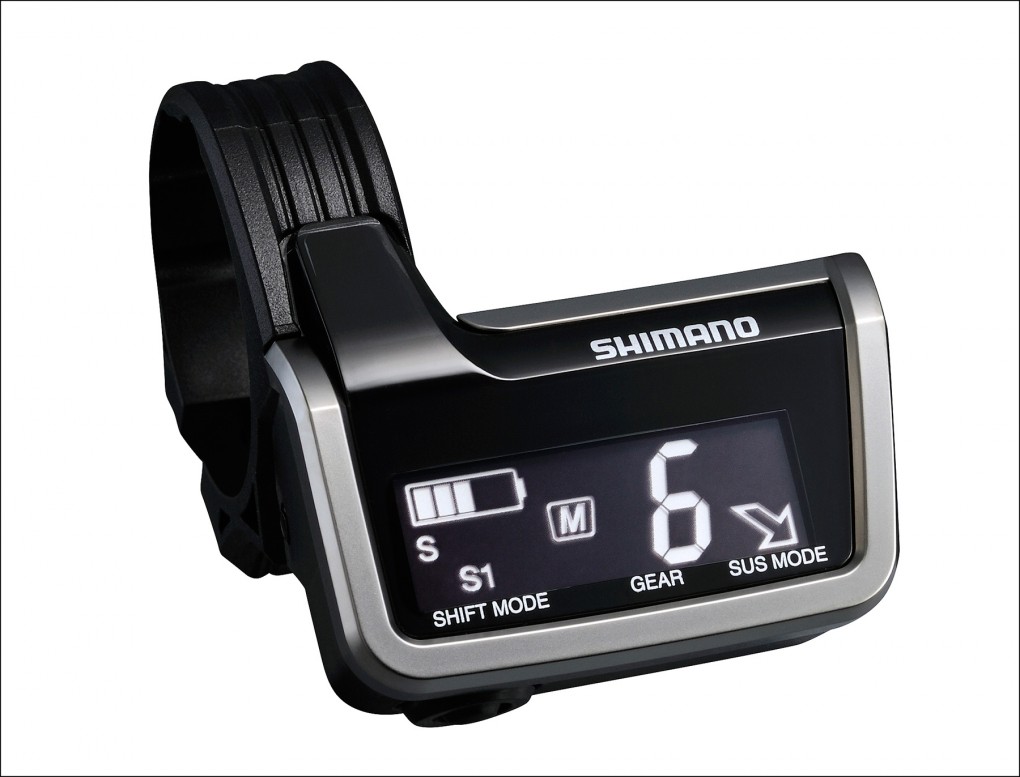
As this Di2 display hints at, the system will be compatible with Fox electronic suspension. Could this finally spell the end of bars swamped with umpteen shifters and cables? A few years back Shimano filed a patent on an electronic dropper seatpost, so who knows, things could be far neater in future. The question is though, would you trust so many electronics on your bike? Would it be a recipe for disaster? I suppose as long as everything has some form of manual override as a failsafe then all should be ok.
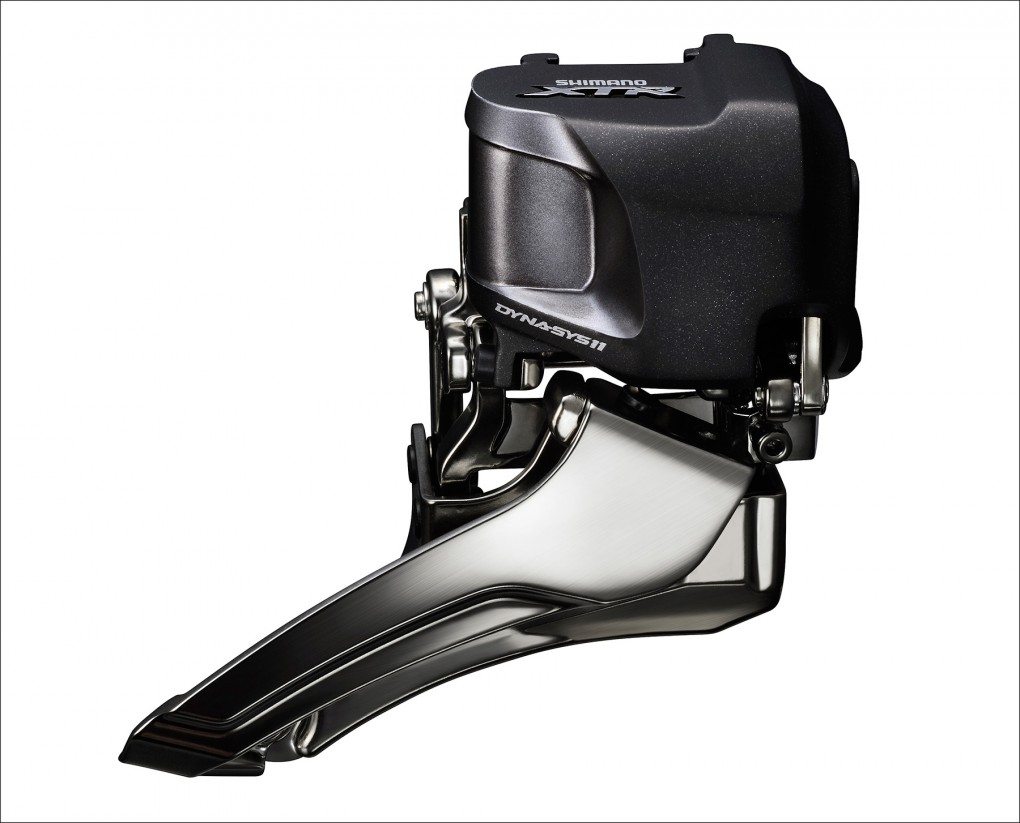
With the popularity of 1×11 it’ll be interesting to see how many users opt for the front mech on this system, but that said this XTR groupset suffers from the same drawback as its mechanical brother, and that is that Shimano are only offering an 11-40t cassette, which is far less of a range than that given by SRAM’s 10-42t cassette. The big question I suppose is whether this system will work with a SRAM cassette? If it does then that may well be an impressive combination.

The final part of the system is of course the battery. On many road bikes with Di2 groupsets this is hidden down the seat tube, but it can be mounted pretty much anywhere really. Charge wise it’ll last for ages, but you will of course have to remember to charge it every so often, and although light it obviously does add some weight (we haven’t managed to find out the exact weight yet).
So what’s the verdict then? Well obviously only time will tell the true answer to that, but I really wouldn’t be too surprised if we see this trickle down to more affordable levels in years to come. I, like many others, have been dubious about anything electric on a bike, but after being a mechanic for many years the one thing that I really think lets bikes down these days is gear cables. There were doubters about hydraulics for brakes, but thankfully we did eventaully manage to get rid of brake cables. If anything though grotty cables have an even bigger impact on the performance of gears than they do on brakes, so isn’t it about time we sorted out a decent viable alternative? This could well be that very thing.
What do you lot think? If you had the money would you be interested?
Prices:
Rear Mech: £429.99
Front Mech: £269.99
Shifters £149.99 each
Batteries: Internal £99.99, External £49.99
PCE1 (optional cable/programming interface): £179.99
Junction boxes and cables will be around another £100 per bike.
Weights:
Rear Mech (RD-M9050-GS): 289g
Front Mech (FD-M9070 D-type): 115g
System Display (SC-M9050): 30g
Shift Switch (SW-M9050): 64g




